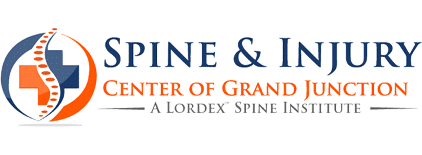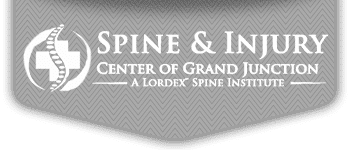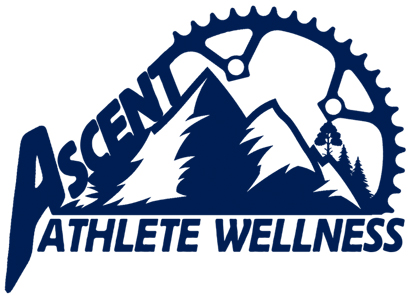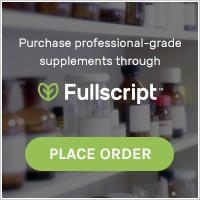Integrative & Regenerative Athlete Wellness
Regenerative Medicine
Regenerative medicine may sound like science fiction but in fact, several of the techniques utilized in this field have been around for many, many years. If they seem new or futuristic it is because in some cases, certain types are being utilized more and more recently to help heal acute and chronic injuries and various pain conditions. All of the techniques work in conjunction with the body’s mechanisms for healing – either to augment, stimulate, or promote. There is a spectrum of Regenerative injection therapies and along this spectrum the science of how or why a technique works differs as does the cost of the procedure. Regenerative injections can be incredible alternatives to pain medications and in some situations, surgery. There are some situations where the right type of regenerative injection can be an adjunct to surgery – in these cases, surgery may still be imminent but the injections can significantly improve pain and function until surgery becomes inevitable. Other times, they are useful postoperatively to complement the surgical outcome. One important thing to understand about Regenerative medicine/injections specifically for the treatment of acute and chronic musculoskeletal problems/injuries and soft tissue pain conditions is that because they are deemed experimental and do not have FDA approval, they are not ever covered by any type of medical insurance (e.g., HMO; PPO; Medicare; or Medicaid; etc) in any state or any situation. These are elective procedures and are 100% out of pocket expenses. Dr. Rook will thoroughly discuss the aspects of Regenerative medicine during your consult and he, and any member of our staff, will gladly answer any of your questions about the techniques, risks, benefits, alternatives and the costs in an effort to help you find the best treatment options and outcome for your situation – even if that is with another clinic or provider.
Prolotherapy (formerly or sometimes still, called Sclerotherapy)
This technique of Regenerative medicine can be considered the most basic technique in the spectrum. However, that does not mean Prolotherapy injections are not effective. The basis of Prolotherapy lies in the body’s use of normal inflammation to stimulate and promote healing. Dr. Rook will gladly help you understand why inflammation is not always bad (but his wife is a Rheumatologist so he knows that there are situations where inflammation is the problem). When traditional Prolotherapy is performed, a mixture of solutions are injected into the target area to trigger a localized response drawing fibroblasts, growth factors and progenitor-type cells (like stem cells) to the damaged/injured tissue (s). This then leads to the healing. Naturally, if someone has an underlying inflammatory/autoimmune condition Prolotherapy may not be a viable option. Traditional Prolotherapy is typically the least expensive Regenerative option but can work for a large variety of conditions. However, it may require more repeat injections in the beginning of the treatment course to achieve a similar result to other Regenerative techniques.
Prolozone
This technique is an amalgam of new and old. Similar injections to traditional Prolotherapy are made into the treatment area but additionally, medical grade ozone (03), which we obtain from a specialty device in our clinic, is also then injected. Since it is a gas, ozone dissipates into tissues in some cases helping to expand our therapeutic reach. The wonderful thing about O3 is both in its ability to assist in promoting healing while having a powerful effect on mitigating pain – in many situations, quite immediately. Most widely, the liquid solutions that precede O3 injection are mixed a bit different than traditional Prolotherapy. One of the many things that makes Dr. Rook’s practice (and results) different in Regenerative medicine is that has developed methods to meld traditional Prolotherapy and Prolozone. In either case, the solutions are prepared at the time of your procedure. Like traditional Prolotherapy, additional treatments spaced between 2 to 6 weeks apart (condition and patient dependent) are typically required to maximize benefit and then at some point, maintenance treatments months to years apart can sustain the results (in specific conditions).
Platelet Rich Plasma (PRP)
Platelet Rich Plasma (PRP) is what is known as an autologous transfer of cells. That is the fancy medical way of saying, you are donating your own cells back to yourself. PRP is actually a component of your whole blood and that is where we start when using this Regenerative injection technique. After ensuring you do not have a medical reason that would exclude our use of your PRP (Dr. Rook will review those during your consult), one of our medical assistants will draw blood from you (most likely from a vein in the crease of your arm known as the antecubital fossa) much like when you have labs done or donate blood. Then we use what Dr. Rook considers the best device on the market for harvesting PRP while you are being prepared for your treatment procedure. This device works within minutes to separate the layers of your whole blood giving us a very useful, potent amount of PRP. Why do we want PRP – because it is particularly high-yield in fibroblasts, growth factors and progenitor-type cells – all are important in healing and repair. Then, during that same visit, PRP is injected into the target treatment area. This modality exists in the middle of the Regenerative spectrum and is seen as a more potent technique. As such, results may require fewer injections but because there is a more extensive process involved, the cost is higher.
Stem Cell
Stem cell treatments have been around several decades as a treatment for various adult and pediatric cancers and some neurologic disorders. In this sense, they are viewed typically as more conventional treatment and can be either experimental or FDA approved. But, the use of stem cells for musculoskeletal injuries, pain and soft tissue conditions is the newest field of Regenerative medicine. It is entirely experimental and does not have FDA approval at all. However, that statement is not made to scare you but rather to help educate you. Stem cell treatments when used properly for the right conditions (and the correct type of stem cells) can be effective. Unfortunately, some clinics throughout the US have touted stem cells as the “Holy Grail” of Regenerative medicine and tried to convince patients that the other forms of Regenerative injections are no longer worthwhile. That is not really the truth.
There are different types of stem cells and different ways that doctors performing Regenerative injections can obtain stem cells. There are autologous forms (remember that word from above – cells obtained from you) and allogeneic forms (cells obtained from a donor). There are risks and benefits, pros and cons to either type all of which Dr. Rook can discuss with you during your consult and treatment plan. No matter what type of stem cells that are use, this category of Regenerative medicine lies on the more expensive end of the spectrum. It is possible, that when used in the appropriate conditions, stem cells could lead to an outcome with the least number of subsequent procedures required. IMPORTANT NOTE ABOUT Dr. Rook’s Clinic: At present, because of safety concerns regarding Covid-19, Dr. Rook will not be performing stem cell injections. This will change once he is certain that there is no risk to any potential patient who might receive stem cell injections in his clinic. In his practice experience, however, there have been few conditions where stem cell would be the only option – in other words, in most cases that present to a clinic like his, if Regenerative injections are indicated, the other options listed above are typically effective.
OSTEOPATHIC MANUAL TECHNIQUES (OMT)
Osteopathic manual techniques (OMT) can be an alternative and/or adjunct to other types treatments for acute and chronic pain. Dr. Rook does not utilize all modalities of Osteopathy but rather prefers a technique where he combines Active release, Myofascial release, Muscle energy and some times counter strain techniques. His treatment sessions usually begin with at least one 90-minute session to obtain a thorough history and exam and begin treatment. Some conditions and patients respond quickly and favorably. However, not all problems or patients do well with this form of OMT but that can be determined in a brief consult. It is important to note that the methods that Dr. Rook employs can be uncomfortable (if you have not been able to tolerate deep tissue massage, this treatment may not be for you). OMT may be used or recommended in conjunction with Regenerative injections or along with Chiropractic, Physical Therapy, Acupuncture and/or Corrective Exercise Therapy.
LIFESTYLE OPTIMIZATION
This topic encompasses a wide range of treatments, conditions and therapeutics in a multitude of clinics these days. Some refer to it as Anti-Aging or Functional Medicine and yet other’s simply, Bioidentical’s (BHRT). Dr. Rook can help identify if there are underlying factors that may be affecting injury, healing, performance of daily tasks and even activity recovery. In some cases there is an underlying medical condition that has not been identified or treated and Dr. Rook will assist in getting you to the appropriate specialist. In other cases, there are changes in one’s lifestyle that he or the colleagues he works with can help you modify. In some situations there may be natural or bioidentical treatments that will be useful.
OFFICE HOURS
Monday
8:00am - 5:00pm
Tuesday
8:00am - 5:00pm
Wednesday
8:00am - 5:00pm
Thursday
8:00am - 5:00pm
Friday
8:00am - 5:00pm
Spine & Injury Center of
Grand Junction
2646 Patterson Road Suite A
Grand Junction, CO 81506
(970) 436-4400




